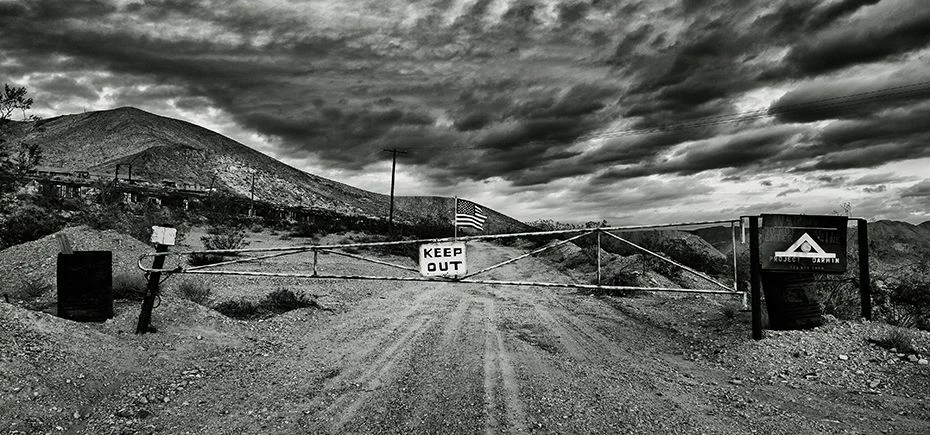
Partner Article
Death Valley set to come to life at unique prolab exhibition
Collectors to get the chance to buy long lasting Crystal Archive prints of Tim Wallace’s astonishing pictures of an abandoned township in the heart of the hostile Death Valley
If you’re a collector of fine art prints then you not only want to love the work you’re investing in but you’ll want the reassurance that it’s going to last a lifetime.
And that’s exactly what you’ll get if you decide to buy one of photographer Tim Wallace’s extraordinary images of a classic American Ghost Town from his new show.
All the work from Tim’s exhibition, which is going on show at pro lab Digitalab’s in-house gallery in Newcastle for six weeks from the launch night on August 7th, has been output on Fujifilm’s celebrated Crystal Archive paper, which offers outstanding stability and a lifespan that could be way over 100 years.
The Fujifilm connection runs deep with Tim, for not only is his work output on to Fujifilm paper but his pictures have been shot using the company’s highly rated X-Pro 1 CSC in tandem with a 14mm f/2.8 lens, chosen for its ultimate portability and ability to output high quality professional results. The need to travel light was a crucial part of the equation when Tim, described recently as one of the world’s most influential photographers, set off into the wilderness to re-discover the abandoned township of Darwin, located well off the beaten track in the heart of the hostile Death Valley desert in Nevada.
“Death Valley has always held a fascination for me in terms of its sheer scale and beauty,” says Tim, “and the idea of a photographic expedition to an abandoned town in its very heart was one that I couldn’t resist. The town itself is very hard to find and it wasn’t until my second visit to Death Valley that I managed to locate it, laying so far off the road along a very dusty track that it’s very easy to pass it by without ever knowing that it ever existed.”
Having managed to find his way to this desolate location Tim set out to explore this rotting time capsule of a town with his camera, marvelling all the time at the rich textures and the amazing light that he encountered at every corner.
“It was hugely inspiring for me creatively as a photographer,” he says. “I believe that, as a professional photographer, personal work is something that is very important to do, offering us the freedom to express ourselves through our work that day to day commercial work, with all its demands, simply cannot. My entire body of work in Darwin was shot using just the one camera and lens, and I simply set out to capture what I saw before me.”
Nearly 30 images from the project will go on show at Digitalab and it will be Tim’s first ever exhibition, his choice of venue for his exhibition being down to his respect for the lab and his long standing relationship with lab manager Jeff Heads. “It was Jeff who suggested we output the prints on Crystal Archive and I left that decision to him since I trust his judgement totally,” says Tim. “I use Digitalab for my professional and commercial work as, in my view, they are one if the UK’s leading print suppliers, and I don’t want anyone but Jeff to print for me: I know he’ll give me the very best quality output.” Digitalab’s owner and Exhibitions Manager Jill Roe is delighted at the opportunity to show Tim’s work, and feels it will be an appropriate show for a lab that also boasts a long life span – sixty-five years to date – to be staging. “You can’t get better than a C-Type print for quality and archival stability,” she says, “and we’ve combined the tradition of silver paper with laser printing to ensure the very best results. The prints will be on sale through our dedicated website address once the exhibition opens and I’m sure they will be a very attractive purchase for collectors.”
For Tim the chance to put his work on show for the first time is one to relish, and it will allow him to re-live what he considers to be one of his best ever shooting experiences. “There are three main things that will remain with me always from my visit there,” he says. “The sheer deafening silence as the sun dropped across the valley and left me and the town in darkness, the US Army truck with the bullet hole in the windscreen parked out of sight, and noticing that every clock that I came across had stopped at 4:20 on Sunday the 13th, even though they were all ‘mechanical’.”
More information:
www.digitalab.co.uk/timwallace_darwin.html
www.ambientlife.co.uk
This was posted in Bdaily's Members' News section by Jill Roe .
Enjoy the read? Get Bdaily delivered.
Sign up to receive our daily bulletin, sent to your inbox, for free.








 Will the Employment Rights Bill cost too much?
Will the Employment Rights Bill cost too much?
 A game-changing move for digital-first innovators
A game-changing move for digital-first innovators
 Confidence the missing ingredient for growth
Confidence the missing ingredient for growth
 Global event supercharges North East screen sector
Global event supercharges North East screen sector
 Is construction critical to Government growth plan?
Is construction critical to Government growth plan?
 Manufacturing needs context, not more software
Manufacturing needs context, not more software
 Harnessing AI and delivering social value
Harnessing AI and delivering social value
 Unlocking the North East’s collective potential
Unlocking the North East’s collective potential
 How specialist support can help your scale-up journey
How specialist support can help your scale-up journey
 The changing shape of the rental landscape
The changing shape of the rental landscape
 Developing local talent for a thriving Teesside
Developing local talent for a thriving Teesside
 Engineering a future-ready talent pipeline
Engineering a future-ready talent pipeline